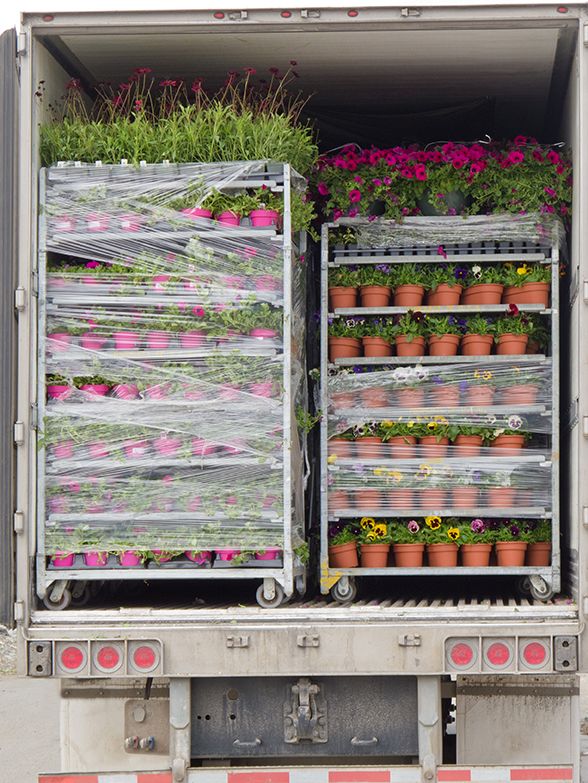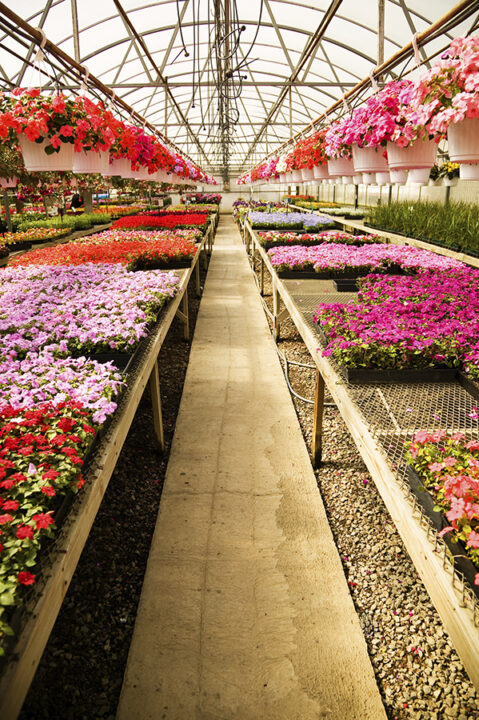5 Tips for Combatting Rising Horticulture Transportation Costs

Photo: Hortica
Travel and delivery serve a significant role in the horticulture industry. However, if your greenhouse transports products or equipment, it could introduce several safety risks to your drivers, company, and others on the road.
The Consumer Price Index shows that used car and truck prices were up nearly 39% from January to December of 2021 and, as of this writing, new vehicle prices remain high, up 12% year-over-year. Add in the risk of rising medical care prices, and suddenly your bottom line could face a large setback from just one accident due to repair, replacement, and injury costs.
While some driving risks may seem unavoidable, you can take steps to help reduce the odds of a costly accident — one that could be even more costly due to today’s market conditions. I’ve compiled a list of reminders I often share with other growers to help their team stay safe on the road. If your greenhouse is one of many that rely on company vehicles, please continue reading, and remember to drive safe.
Hire Safe Drivers
Running a successful delivery and transportation program starts with the right people behind the wheel. Experience and history are one of many indicators to help your company hire qualified drivers. Don’t let vacancies and time constraints lead to relaxed hiring standards. A consistent hiring process that includes background checks, motor vehicle records, and safety history will benefit your business long term.
The Federal Motor Carrier Safety Administration (FMCSA) can also provide real-time information about previous drug and alcohol program violations through its Clearinghouse database. Your drivers reflect your company, and their behavior on the road could make the difference between an accident and a successful delivery.
Train Your Team
Hiring qualified drivers is a positive step toward reducing your business’s risk, but it’s only one of several strategies to help your team stay safe. Your greenhouse is responsible for coaching drivers — regardless of their experience. An ongoing safety training program can help newer drivers develop their skills, while reinforcing the knowledge of more experienced drivers. Driving while representing a business is very different than personal driving, and it comes with a significant responsibility that goes far beyond basic drivers’ education.
Training topics may vary depending on your operations, but they should include a range of scenarios that your drivers may face. Possible topics could include:
- Defensive driving strategies
- Vehicle inspections
- Distracted driving
- Preventive maintenance
- Cell phone policies
- Hours of service
- Post-accident procedures
- Driver wellness
When you invest in training, you invest in the success of your drivers. And successful, well-trained drivers can help lower your greenhouse’s auto risk, giving you peace of mind to focus on your business.
Formalize Safe Driving Policies
As your drivers hit the road, they may need guidance or reminders moving forward. A formal safe driving policy can help. Think of a written policy as your greenhouse’s playbook for communicating goals and maintaining a culture of safety. It should outline expectations for drivers, define your business’s safe driving policies, and include guidelines for accountability if violations occur. One example of this is communicating your business’s cell phone use policy, and any laws that might apply.
Formalizing your plan also creates an opportunity to engage your drivers and ask for input as you develop or refresh your program. By showing a willingness to incorporate their feedback, you can help build commitment and a broader understanding of best practices across your business.
Maintain Your Vehicles
While your drivers play a significant role in safe driving, their vehicles are just as important. Vehicle maintenance is a vital part of any delivery service. Not only does maintenance ensure that vehicles are safe to drive, but it also helps reduce repair costs while extending the lifespan of your business’s vehicles.
A checklist and schedule can help your team inspect their vehicles as part of their driving routine. Consider including the following areas as part of your greenhouse’s inspection process:
- Brakes
- Tires and wheels
- Lights and signals
- Fluid levels
- Trailer hitch
- Load
Insure Your Vehicles for Potential Accidents
Even when your drivers take precautions, others who share the road might not drive with the same consideration. Fortunately, commercial auto insurance can reduce your business’s financial risks from property damage or bodily injuries.
When you evaluate your insurance policy, it’s important to understand the coverages available to you, and which risks they cover. Here’s a summary of what each coverage means:
- Collision: If one of your drivers is involved in an accident using a company vehicle, collision coverage can help cover damage to your vehicle.
- Comprehensive: When your vehicle is damaged by something other than a collision, comprehensive auto insurance can help cover repair or replacement costs. Examples of damage include hail, fire, or falling tree limbs.
- Bodily injury: If an auto accident involving your business hurts another person, bodily injury coverage helps protect your greenhouse from medical costs and legal risks.
- Property: When an accident occurs, property owned by others may get damaged. Property damage insurance can help protect your business if one of your drivers is found liable for the damages.
- Uninsured/underinsured: While your business may understand the value of insurance, others may not. If an at-fault driver damages one of your vehicles without enough coverage, uninsured or underinsured coverage can help you cover the expenses of damages they would’ve paid.
The Takeaway
Road safety requires a daily commitment from your business and drivers. And when performed successfully, a safe driving program — along with the right coverages — can help save lives, reduce accidents, and protect your bottom line. The reminders I’ve shared in this article are only a start. Talk with your local experts and insurer to discuss your greenhouse’s specific driving program. Stay safe, and don’t hesitate to contact me at [email protected] if you have questions.









